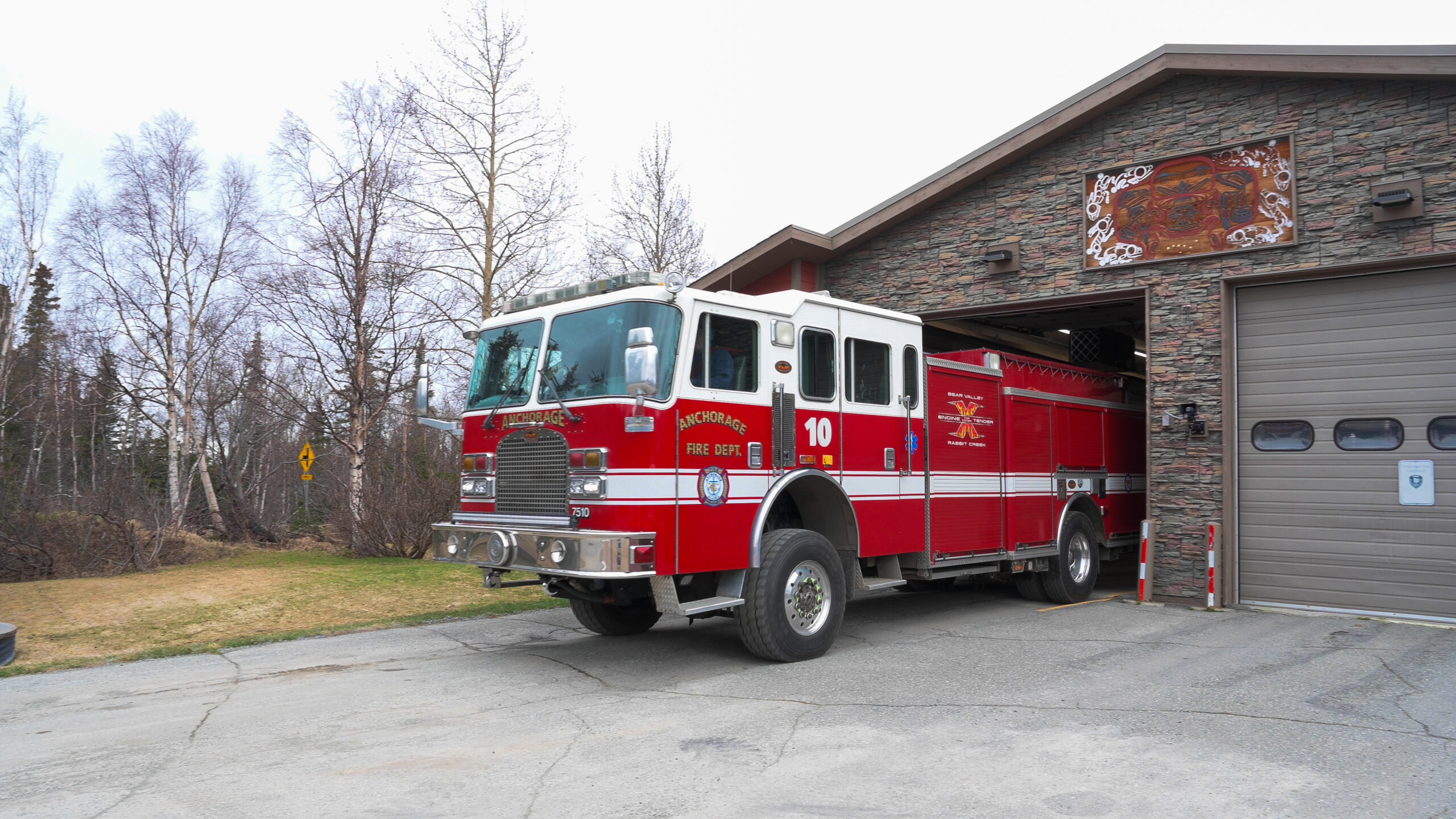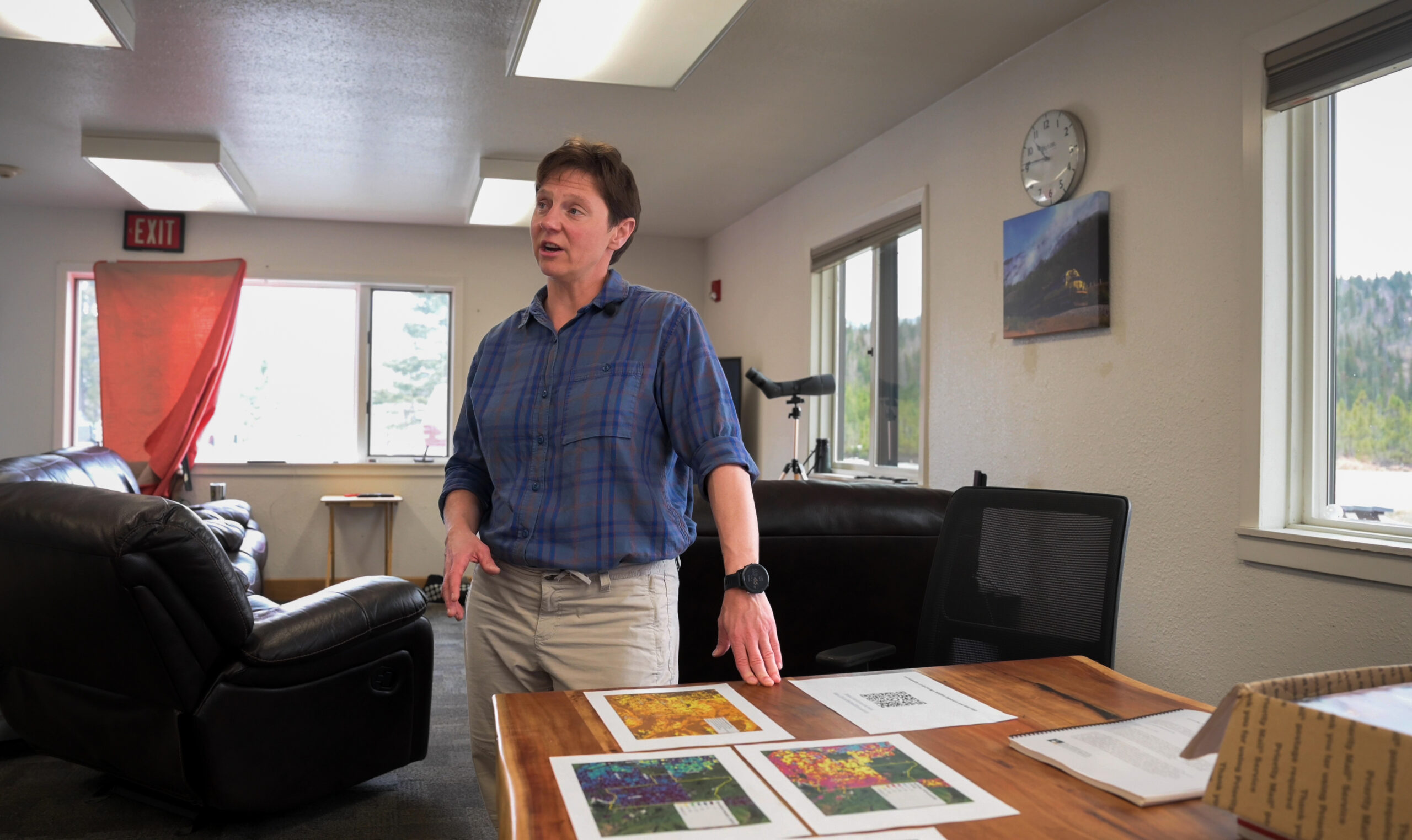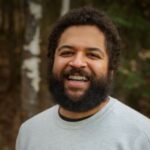
Anchorage’s Hillside area largely consists of houses tucked into the woods, with very few roads in and out. Ky Holland grew up in the area, and has lived in his house for about 24 years.
“One of the things that has characterized the Anchorage Hillside, in particular, has been this ability to have this rural feeling neighborhood structure up here,” Holland said.
Another characteristic: a high risk of wildfires.
Wildfire season is starting in Anchorage, and Holland said Hillside residents are well aware. Experts say it’s not a matter of if but when a large blaze impacts the neighborhood.
Holland described the McHugh Creek Fire in 2016 as a wake up call. That fire was caused by a campfire that wasn’t put out, and ended up burning hundreds of acres of parkland in South Anchorage, along the Turnagain Arm. Holland said the winds that day blew in the opposite direction they normally do, away from many Hillside properties.
“If the winds had been blowing in the direction they would normally have blown in, you know, coming up out of the Turnagain Arm, it would have blown that fire over into Potter Valley,” Holland said. “Why the winds were blowing the opposite direction… you know we can be thankful for it, but we were lucky.”
Wildfire season is nothing new to Anchorage residents, Hillside or otherwise. National Weather Service climate researcher Brian Brettschneider said the time of year, usually late May and June, lends itself to a higher risk.
“This is the driest time of the year,” Brettschneider said. “This is the sunniest time of the year. This is the time of the year where we have pretty steady afternoon winds, the time of the year with the lowest relative humidity and very long days.”
In addition, Brettschneider said global climate change is making some of those risks even riskier. It’s meant an earlier start to the thunderstorm season, a decrease in cloud cover, lower humidity and an increased amount of time that vegetation is exposed.
“All the ingredients that go into fire risk and fire vulnerability, they’re all increasing as a result of the warming climate,” Brettschneider said.

The Hillside hasn’t seen a catastrophic wildfire yet, but the risk is on the minds of local officials.
“There’s a lot of fuel for a wildfire up here,” said Anchorage Fire Department Capt. Matt Herman. “Beetle-kill brush and the topography lends itself to, you know, a large event someday.”
Herman works out of Station 10, the fire station closest to the Hillside, and said the nature of how the neighborhood is set up will also make response difficult.
“It is a challenge,” he said. “I mean, narrow roads, topography going uphill or downhill and people trying to evacuate is going to present a problem.”
As a result of the increased risk, getting information out to local Hillside communities has been increasingly important. Jennifer Schmidt is a natural resources policy and planning professor at the University of Alaska Anchorage’s Institute for Social and Economic Research. For the past few years, she’s been giving presentations to Hillside-area community councils about wildfire safety, highlighting maps that show the risk of fires at various properties. The maps are color coded, with dark green to red areas at the highest level of risk.
“What we’re showing is the hazardous fuels that are within the Hillside area, and by hazardous fuels, we mean vegetation that’s flammable, that can light on fire,” Schmidt said.
Schmidt said people in the riskier areas should be more wary of not only what wildfire fuel is on their property, but what’s in the surrounding areas, too.
“When you look at houses, it’s not just what’s right there,” Schmidt said. “It’s what’s around it, like 100 to 500 meters, because that’s how far you know the embers could disperse and land on a person’s roof and catch it on fire.”

Holland said he and his neighbors have been taking Schmidt’s presentations to heart, and there’s been a local push to make homes more fire-safe, like making sure firewood and fuel cans are not close to their homes. They’ve also done wildfire drills and organized phone trees to keep neighbors informed.
In one instance, Holland said his neighbors were able to start evacuating before the fire department even sent out a fire warning. At that point, the only public alert was that a nearby street was closed.
“Nobody was communicating that there was a fire in the woods, that you know, we actually had a wildfire starting to go on,” Holland said. “And so it was because we could take a little more initiative that we’d practiced to do that. It was actually hours later before there were any sort of news, formal news alerts from an authoritative source.”
Holland said he doesn’t necessarily view the steps the community has taken as a response to potential danger. Instead, he thinks it’s a way to bring his neighbors closer in general.
“When folks asked me about, ‘Are we doing this because we’re afraid of a wildfire?’ I don’t like to look at it that way,” Holland said. “You know, I like to look at it in terms of we’re doing this because we want to create a better community. And like I said, whether it’s a wildfire, an earthquake or a cup of sugar, I want us to be a little better connected down the road and not be doing this out of fear. Because I don’t think that’s the way to get people motivated.”
For now, Holland is doing his part, moving firewood away from the side of his home, and packing up his snowmachine gas cans.
The Bureau of Land Management is holding its annual wildfire safety community meeting on May 9 from 6 to 8 p.m. at the Campbell Creek Science Center.
Wesley Early covers Anchorage life and city politics for Alaska Public Media. Reach him at wearly@alaskapublic.org and follow him on X at @wesley_early. Read more about Wesley here.





